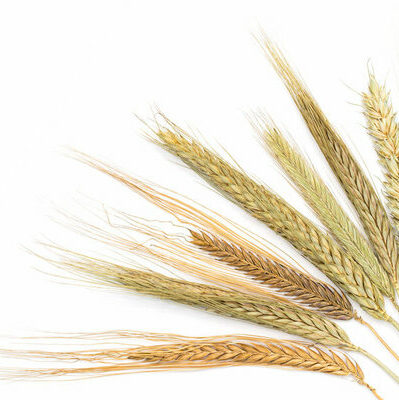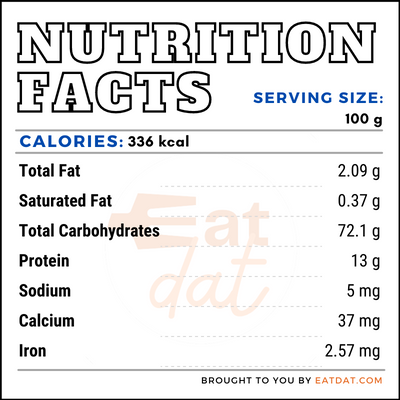
Triticale
What is Triticale?
Triticale is a hybrid grain between wheat and rye. It was first created in laboratories in the 1800s and has only recently become commercially available. Currently, the majority of this crop grown is used as fodder feed, but it is suitable for humans as well and is used similarly to wheat and made into bread, flour, and cereals.
- The taste is very similar to wheat and hence it works well as a substitute.
- Also, it is a hardier crop than wheat and has some gluten, which makes it a good nutritional solution for people in rough terrains with poor soils.
Some grains that are popular include:
- Wheat
- Oats
- Rice
- Corn
- Barley
- Millet
- Rye
- Sorghum
- Triticale
Origin
The creation of triticale is credited to Scottish botanist, A. S. Wilson, who created the first wheat and rye hybrid in 1873. This went nowhere because the plants were unable to reproduce. German botanist, W. Rimpau, created a hybrid that was partially fertile in 1888. It was in 1937 that botanists understood that using colchicine can help in production of fertile seeds, and triticale has since then been more viable to produce. This grain was originally produced as fodder for livestock but has gradually made it into human consumption.
Nutrition
Nutritional profile for triticale (100 gms):

This grain is rich in calcium, iron, magnesium, phosphorous, potassium, sodium, zinc, manganese, and folate. Consumption of whole grain varities can help control diabetes because it induces lower insulin response. Additionally, it may help in prevention and treatment of other metabolic disorders.
Commercial production
Triticale is best grown in sandy loam to heavy clay soils with good drainage. Fields that previously grew cereal crops or forage grasses are best avoided. Once harvested, it can be stored in a place with less than 13 percent moisture and at the temperature of 17°F (-8°C) to prevent molds, mites, and insects.
Poland is the main producer of this grain, accounting for 35 percent of production. It is followed by Germany, Belarus, France, Spain, Lithuania, China, Austria, Russia, and Hungary.
Triticale recipes
This grain works just like wheat and has some gluten. Hence, it is suitable for preparing breads, baked goods or breakfast foods like waffles. Here are a few recipes:
FDA regulations
The FDA classifies triticale under ‘gluten containing grain’, since it is a hybrid of wheat and rye. This term may include wheat, rye, and barley, or a mixture of any of the three.
References
History, International Triticale Association, Ghent University, http://triticale.org/triticale-history/
Meija, Laila et al. “Postprandial Glycaemic and Insulinaemic Responses after Consumption of Activated Wheat and Triticale Grain Flakes.” Journal of nutrition and metabolism vol. 2019 6594896. 10 Jan. 2019, doi:10.1155/2019/6594896, https://www.ncbi.nlm.nih.gov/pmc/articles/PMC6348912/
Triticale Production and Management, Manitoba, https://www.gov.mb.ca/agriculture/crops/crop-management/triticale.html
Production and Use, Saskatchewan, https://www.saskatchewan.ca/business/agriculture-natural-resources-and-industry/agribusiness-farmers-and-ranchers/crops-and-irrigation/field-crops/cereals-barley-wheat-oats-triticale/triticale-production-and-use
